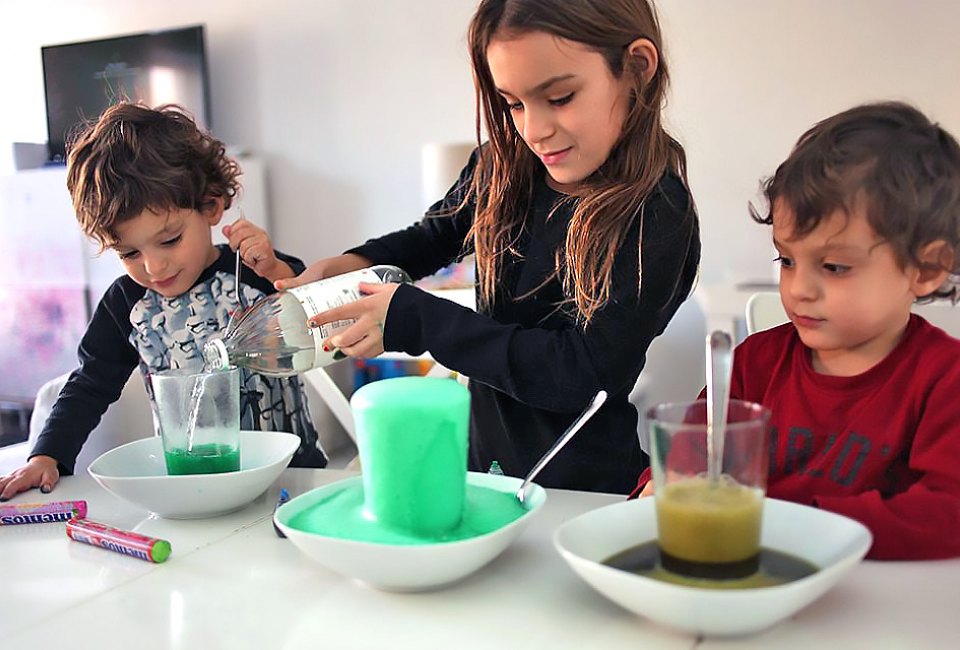Science Play: Easy DIY Experiments to Do at Home
Science Play: Easy DIY Experiments to Do at Home
Science experiments are a fantastic way to spark curiosity and encourage hands-on learning. Whether you’re looking to explore chemistry, physics, or biology, simple experiments at home can make science both fun and educational. In this post, we’ll share 10 easy and exciting science experiments that you can do with your kids using everyday materials.
1. Why Science Play Matters
Engaging in science play allows children to explore natural phenomena and develop critical thinking skills. Here’s why it’s important:
- Hands-On Learning: Experiments provide practical applications of scientific concepts.
- Problem-Solving Skills: Kids learn to form hypotheses and test outcomes.
- Curiosity and Exploration: Encourages asking questions and seeking answers.
- STEM Foundation: Builds a strong base for future scientific learning.
2. Top 10 DIY Science Experiments at Home
2-1. Baking Soda Volcano
- Materials: Baking soda, vinegar, dish soap, food coloring, plastic bottle.
- Steps:
- Place the bottle in a tray and add baking soda.
- Mix vinegar with food coloring and dish soap.
- Pour the vinegar mixture into the bottle and watch the eruption!
- Benefits:
- Teaches chemical reactions (acid and base).
- Engages sensory exploration with color and motion.
2-2. Magic Milk Experiment
- Materials: Milk, dish soap, food coloring, cotton swab.
- Steps:
- Pour milk into a shallow dish and add drops of food coloring.
- Dip a cotton swab into dish soap and touch the milk’s surface.
- Watch the colors swirl and move!
- Benefits:
- Demonstrates surface tension and chemical reactions.
- Creates colorful and mesmerizing patterns.
2-3. DIY Lava Lamp
- Materials: Vegetable oil, water, food coloring, effervescent tablet, clear bottle.
- Steps:
- Fill the bottle mostly with oil, then add water and food coloring.
- Drop in an effervescent tablet and watch the bubbles rise.
- Benefits:
- Teaches density and immiscibility.
- Introduces basic chemistry concepts.
2-4. Rainbow Walking Water
- Materials: Cups, water, food coloring, paper towels.
- Steps:
- Line up cups with different colors of water, leaving empty cups in between.
- Place folded paper towels connecting each cup.
- Watch the water move and mix colors.
- Benefits:
- Demonstrates capillary action.
- Teaches color mixing and absorption.
2-5. Balloon Rocket
- Materials: Balloon, string, straw, tape.
- Steps:
- Thread the string through the straw and tape the balloon to it.
- Stretch the string between two points.
- Release the balloon and watch it rocket along the string!
- Benefits:
- Demonstrates Newton’s third law of motion.
- Introduces basic principles of physics.
2-6. Dancing Raisins
- Materials: Clear soda (like Sprite), raisins, glass.
- Steps:
- Fill the glass with soda and drop in raisins.
- Watch the raisins move up and down as bubbles attach and detach.
- Benefits:
- Explores buoyancy and gas release.
- Demonstrates density differences.
2-7. Floating Egg Experiment
- Materials: Eggs, salt, water, two glasses.
- Steps:
- Fill one glass with plain water and the other with saltwater.
- Place an egg in each glass and observe.
- Benefits:
- Teaches about density and buoyancy.
- Simple yet visually striking.
2-8. Invisible Ink
- Materials: Lemon juice, cotton swab, paper, heat source.
- Steps:
- Dip the cotton swab in lemon juice and write on paper.
- Let it dry, then heat the paper gently to reveal the message.
- Benefits:
- Demonstrates acid oxidation.
- Fun for secret messages and creativity.
2-9. Static Electricity Butterfly
- Materials: Tissue paper, balloon, string.
- Steps:
- Cut a butterfly shape from tissue paper and hang it from a string.
- Rub a balloon on your hair and bring it near the butterfly.
- Benefits:
- Introduces static electricity concepts.
- Fun and visually engaging.
2-10. Tornado in a Bottle
- Materials: Two plastic bottles, water, duct tape, glitter.
- Steps:
- Fill one bottle with water and add glitter.
- Tape the bottles together at the necks.
- Swirl to create a tornado effect.
- Benefits:
- Demonstrates vortex formation.
- Teaches about fluid dynamics.
3. Tips for Safe Science Play
3-1. Supervise at All Times
- Always oversee experiments to ensure safety.
3-2. Use Non-Toxic Ingredients
- Choose child-safe, non-toxic materials whenever possible.
3-3. Make Cleanup Easy
- Prepare cleaning supplies in advance for messier activities.
4. Final Thoughts
Science play at home is a fantastic way to nurture curiosity and introduce STEM concepts in a hands-on, engaging way. Whether your child loves messy reactions or quiet observation, there’s an experiment on this list that will spark their interest. Start exploring the wonders of science today with one of these simple experiments!
Related Keywords
DIY science experiments USA, easy home science projects, fun STEM activities for kids, science play ideas, educational experiments for children
Amazon best seller








Comments